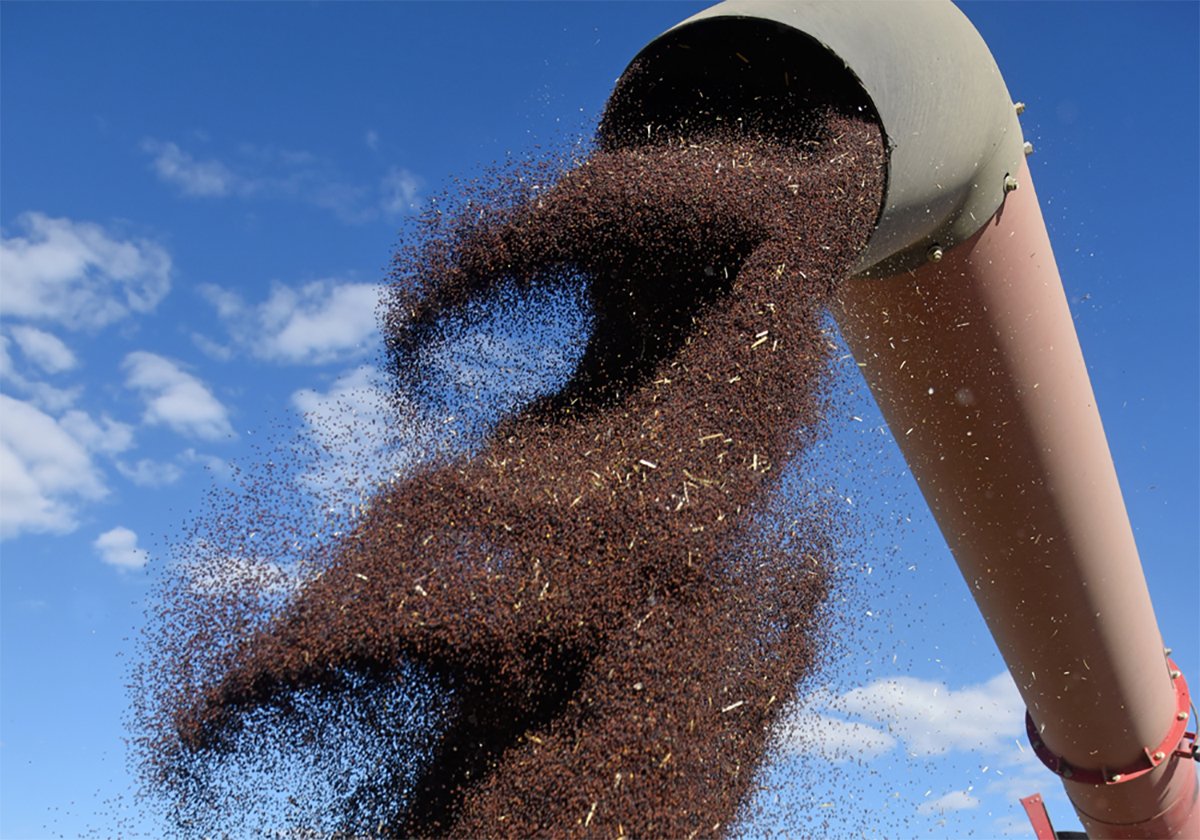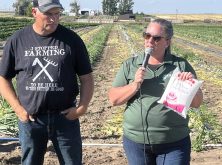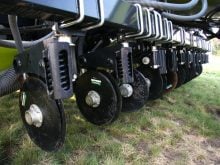I am more familiar with three of these brands/designs and might even
be a little biased. The design problems that I recognize as weaknesses
in older models have often been rectified in the newer models.
This
is a simple design. One of its selling features was the paddle elevator
system in the feeder house instead of a feeder chain. It was simple and
required little maintenance. However, it would wrap badly in some crops
Read Also

Ag minister says tariff situation with China is fragile, volatile
Agriculture ministers from across Canada said they heard canola producers’ concerns about tariffs but it seems unlikely they can do much about them.
such as flax.
The machine avoided grain cracking, but tended to
plug in tough conditions. The triple sieve shoe had little advantage
over the double.
The highlight of this combine was the high
inertia cylinder. It carried the cylinder speed through tough conditions
and it held the clearance that the operator set because the extra
weight was in the cylinder.
We put a high inertia cylinder into a
510 combine and the first thing the owner said was, “you must have given
me a new engine.”
This is a rotary combine designed by White.
Its strength was its simplicity with its rotor running the length of the
combine.
I ran one of these combines for three years, and in my
opinion its advantage is the area from the front beater to the threshing
section.
The material comes up from the beater and is fed around
the front end of the rotor. An auger flighting on the front end of the
rotor augers the material into the threshing area. I’ve seen flighting
with 2,000 hours on it and hardly any recognizable wear.
A big
plus is the hydrostatic driven reversible rotor, which makes it easy to
unplug the machine.
It should be noted that a hydraulic drive
loses its torque when approaching stall conditions, while a belt will
increase torque. That means the belt-driven rotor will plug tighter than
the hydraulic drive.
The single rotor design means there is more
of a tendency to throw the grain coming through the separating grate to
one side of the shoe.
The rotary combine was developed to handle
higher volumes of grain. Other manufacturers turn the threshing
cylinder/rotor lengthwise. Gleaner wanted the feeding characteristics of
a conventional combine so it turned the cylinder crossways. That meant
the length of the rotor was limited by the width of the combine.
Designers
made the separation cage go all the way around the rotor, resulting in a
separation area equal to other combines. This design also forced
Gleaner to have a narrow feeder house running a faster chain speed.
To
get capacity, it uses accelerator rolls that catch the grain and chaff
mixture and shoot it past a blast of air at four times the speed of
gravity. This blows the chaff away and results in little work at the
shoe.
The design resulted in problems in swathed grain because
swaths had to be split to enter the rotor area. In tough conditions it
would tend to jump to one side or the other.
Its smaller
cylinders/rotors have to run faster because of their size. The
peripheral speed for threshing is the same for all makes of combines.
This
design was similar to the Massey with one notable exception: the
concave was a different shape. It pulled away from the cylinder in the
front and the back making it better in corn, resulting in a high volume
of return off the shoe.
Its reputation? Poor sample, but it never
broke down.
This combine had a crossways cylinder similar to a
conventional design and had one cylinder running lengthwise off each end
of this first cylinder. It had the feeding characteristics of a
conventional and the separation characteristics of a rotary, seemingly
the best of both worlds. It was a versatile and effective design, and
judging by the number of bulletins pertaining to the area where the
material has to make the corner, that was a major concern for the
company.
The grain is driven against the front end of this rotor,
and a lot of activity happens there, judging by the wear this area
receives. High capacity results in high wear.
A stone trap is
necessary for most crops, but when it’s added it makes feeding more
difficult.















